Eating Dark chocolate? Could it be? A tempting treat that actually does your body some good? Here, we are discussing on new research that suggests eating dark chocolate may help ward off essential hypertension as a person ages.

Amost 1.3 billion adults worldwide live with high blood pressure, twice as many people than 30 years ago. The condition is a leading contributor to stroke, heart failure, and kidney disease. While diet and lifestyle adjustments work for some, safe supplemental options remain limited. This fuels interest in flavanol-rich cacao and its known vascular benefits.
Chocolate just might be one of the most talked-about treats on the planet, and not only for its many variations and near-universal adoration.
Chocolate also makes the news a lot. It is studied down to the molecular level and positioned both as a positive and negative, friend and foe, to human health.
Sometimes, experts say, chocolate can be an ally in the quest for optimal health. Other times, it’s important to control one’s love of chocolate in order to stay fit and healthy; too much can contribute to weight gain. But remember that overall, chocolate is associated with heart health, brain health, mental health and more.
What About Blood Pressure?
This is what we are going to look at today.
You might be familiar with the blood-pressure machine at drug stores: You stick your arm in, and a cuff closes tight around your arm. This machine will show you two numbers that offer you the tale of your blood pressure health. What, exactly, does this mean?
In order for a person to live healthily, their organs and systems must function optimally. And it all starts with the heart.
According to the American Heart Association, “In order to survive and function properly, your tissues and organs need the oxygenated blood that your circulatory system carries throughout the body. When the heart beats, it creates pressure that pushes blood through a network of tube-shaped blood vessels, which include arteries, veins and capillaries.”
This pressure, the strength of the beat of your hearth through the body, is measured as blood pressure.
The machine measures two forces:
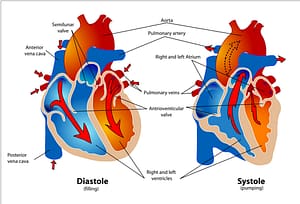
1. Systolic Pressure
Systolic Pressure indicates the pressure in your arteries when your heart beats.
2. Diastolic Pressure
This measures the pressure in your arteries when your heart rests between beats.
When that machine (or your doctor) gives you the two numbers from your blood pressure reading, the systolic pressure number rests over the diastolic pressure number. You might hear “120 over 80” — a healthy range .
Blood pressure changes throughout the day. When we exercise and “get the blood moving,” we temporarily increase it. High blood pressure, also called hypertension, is blood pressure consistently higher than normal. High blood pressure is dangerous because it makes the heart work harder to pump blood, and can harden the arteries. Over time, this can lead to a stroke, kidney disease or heart failure.
Many, many millions of people suffer from high blood pressure, and one of the more concerning aspects of hypertension is that it can build and cause problems with few warning symptoms. So getting blood pressure checked regularly is a very good thing.
There are many factors that can contribute to hypertension, including:
- Being overweight or obese
- Lack of physical activity
- Diet high in salt
- High alcohol consumption (more than 1 to 2 drinks per day)
- Stress
- Older age
- Genetics
- Smoking
- Family history of high blood pressure
- Chronic kidney disease
- Adrenal and thyroid disorders
- Sleep apnea
Okay. Now for some good news, and to get back to our topic at hand: Is chocolate good for high blood pressure?
By analyzing genetic and health data on nearly 350,000 European adults, scientists linked a higher likelihood of dark chocolate consumption with a lower incidence of essential hypertension. Predicted higher chocolate intake was also associated with a reduced incidence of blood clotting in a person’s veins.
And…. drum roll, please……….. Yes!
Though it may sound too good to be true, chocolate can help lower blood pressure, although with caveats to that very bold statement.
Conditions Where Chocolate Is Good For Blood Pressure

Condition #1 — Dark Chocolate Only
A Harvard study found that eating a small square of dark chocolate daily can help lower blood pressure for people with hypertension. But it must be dark chocolate. Sorry to all you milk chocolate lovers out there; the benefits are found only with dark, bitter chocolate. In fact, the darker, the better. Look for chocolate that contains 60 to 70 percent cacao — often called bittersweet or extra bittersweet. This dark chocolate is made with a small amount of sugar and a healthy amount of flavonoids, which is key to lowering blood pressure.

Condition #2 — Small Amounts Daily
While it may be tempting to consume an entire bar of chocolate daily (especially after reading the above), unfortunately, this will do more harm than good. Overindulging in dark chocolate can eat up your daily calorie budget and cause weight gain. As mentioned above, carrying too much weight can raise blood pressure.
The recommended portion is about one square each day (one ounce). That’s it. So if it is too tempting to keep a bar of chocolate on hand because you can’t stop at one square, it’s perhaps better to find other lifestyle changes to improve your blood pressure situation.

Condition #3 — Chocolate and…
This leads us to the final condition: Dark chocolate alone won’t cure high blood pressure. While it may contribute to a reduction in hypertension, other lifestyle changes are needed to make a real, sustained, long-term difference in blood pressure health. If, for example, you are very stressed out and eating poorly and not exercising, and not getting enough sleep, one square of dark chocolate will not be enough to counter the rest of the factors.
However, a square of dark chocolate is the perfect way to supplement other healthy lifestyle choices like exercise, a healthy diet and plenty of sleep. A piece of delicious dark chocolate could be the reward and incentive for making healthy decisions.
At the end of the day, heart health might be the most important investment a person can make to help with optimal health and well-being. And if a square of dark, decadent chocolate is part of that protocol, well then, by all means, savor that moment of deliciousness.
Dark chocolate health benefits
The percentage of cocoa listed on the chocolate refers to the percentage of all ingredients that the cacao plant makes up. That means a dark chocolate product with a higher percentage of cocoa may have a larger amount of the nutrients that deliver its benefits.
These beneficial compounds can include:
- flavanols
- polyphenols
- theobromine
It is important to note that cocoa loses some of its polyphenol compounds as it is processed into cocoa butter, cocoa powder, and chocolate through the manufacturing processes. Processing cocoa not only reduces some of its most beneficial compounds but may also add sugar, milk, and cocoa butter, a processed form of the cocoa bean.
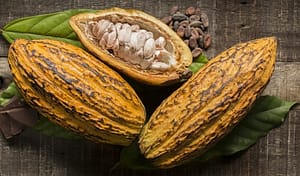
Cocoa has been associated with following health benefits :
- reducing free radicals
- improving blood flow
- lowering blood pressure
- lowering “bad cholesterol”
- reducing inflammation
- reducing insulin resistance
- improving the brain’s ability to make new connections between neurons
- increasing microbiome diversity
Nutritional information
Generally a 101-gram (g) bar of dark chocolate with 70–85% cocoa solids provides:
- 604 calories
- 7.87 g of protein
- 43.06 g of fat
- 46.36 g of carbohydrates
- 11.00 g of dietary fiber
- 24.23 g of sugar
- 12.02 milligrams (mg) of iron
- 230.00 mg of magnesium
- 3.34 mg of zinc
Chocolate manufacturers do not have to report the flavanol content of their products. As a result, it is difficult to know how much dark chocolate a person would need to eat to maximize its health benefits.
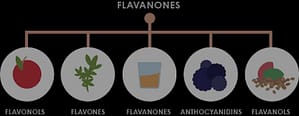
The studies in this article generally used 20–30 g of dark chocolate per day. Dark chocolate with higher percentages of cacao solids typically contains less sugar but more fat. More cacao also means more flavanols, so it is best to choose dark chocolate that includes at least 70 percent cacao solids or more.
Summary
Dark chocolate is a rich source of antioxidants and minerals, and it generally contains less sugar than milk chocolate.
Some research suggests that dark chocolate may help lower the risk of heart disease, reduce inflammation and insulin resistance, increase the diversity of the gut microbiome, and improve brain function.
People interested in adding dark chocolate to their diet should keep in mind that it is high in fat and calories, so moderation is key.



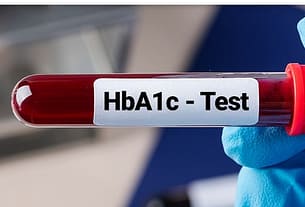
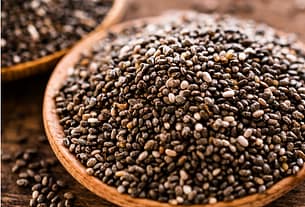

I didn’t know so many benefits of dark chocolate. It’s very informative to me.